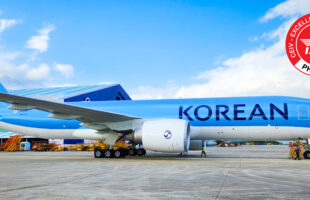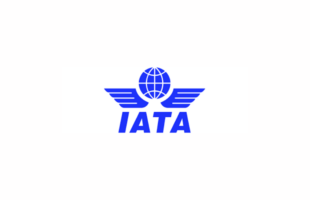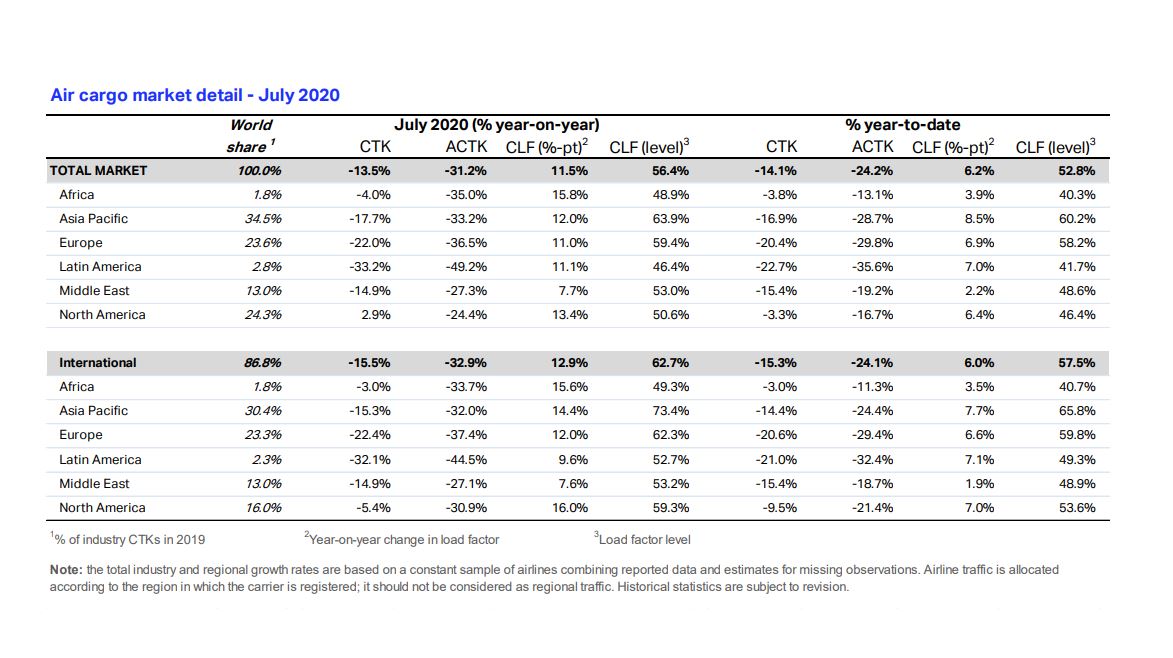
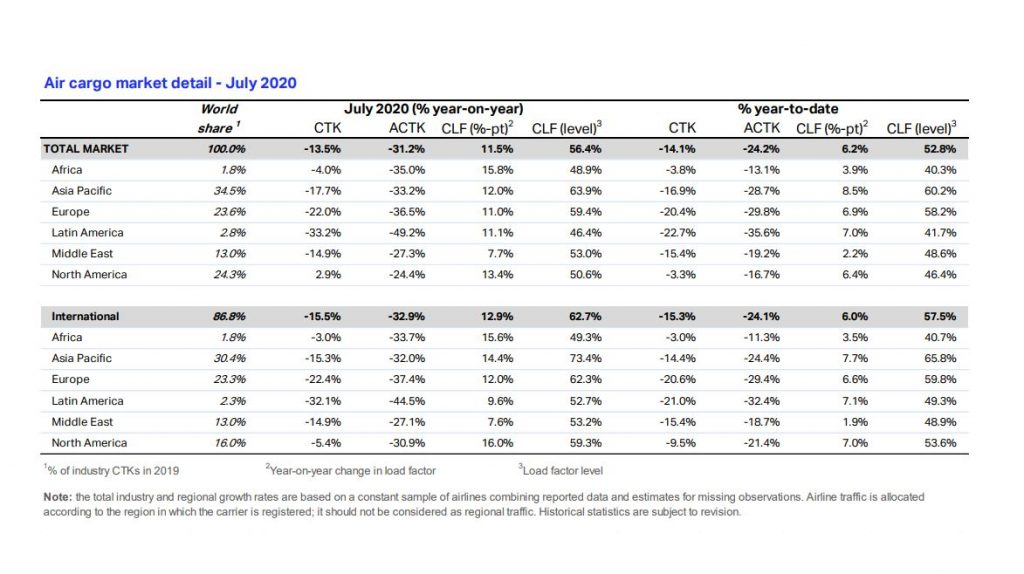
Data released by the International Air Transport Association (IATA) show global air cargo traffic in July dropped 13.5 percent compared to last year, which was a mild improvement from the 17.6 percent shortfall in June.
Air cargo traffic for July was weaker than expected, but new export orders and manufacturing output are indicating signs of improvement for air cargo in the coming period.
The Purchasing Managers’ Index (PMI)—an indicator of economic health in the manufacturing sector—observed increased output in key exporting economies, such as China, the US and Germany.
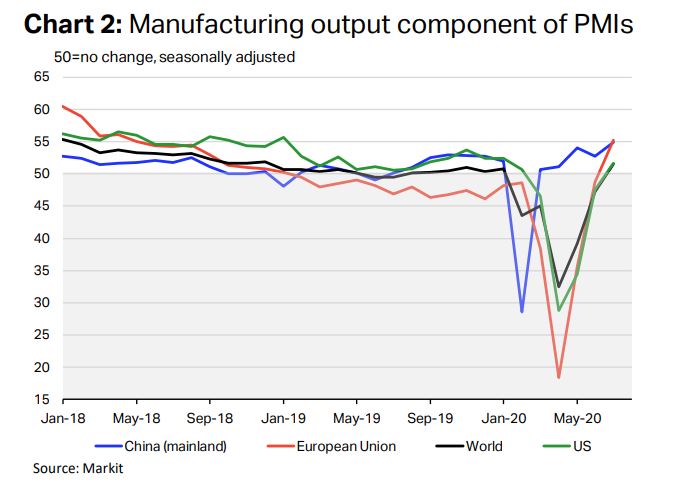
Meanwhile, the PMI that tracks new export orders—an indicator for air cargo—inched up 3.5 points compared to June, and was up 19.8 points since April, IATA explained.
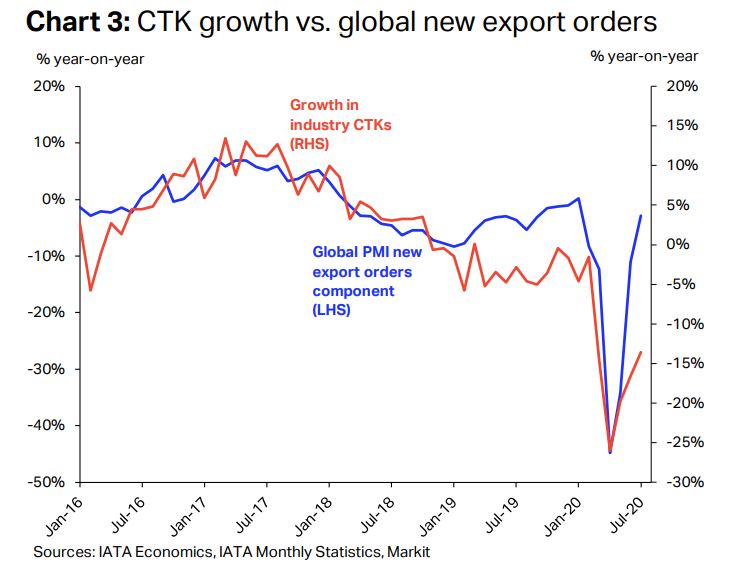
“Economic indicators are improving, but we have not yet seen that fully reflected in growing air cargo shipments. That said, air cargo is much stronger than the passenger side of the business. And one of our biggest challenges remains accommodating demand with severely reduced capacity. If borders remain closed, travel curtailed and passenger fleets grounded, the ability of air cargo to keep the global economy moving will be challenged,” said Alexandre de Juniac, IATA’s Director General and CEO.
Despite the economic indicators, IATA analysts pointed to supply constraints that could impede the growth in air cargo volume.
Global capacity is down 31.2 percent in July compared to the previous year, albeit a slight improvement from the 33.4 percent year-on-year drop in June.
Belly capacity for international air cargo plunged 70 percent in July compared to the previous year no thanks to the withdrawal of passenger services amidst the COVID-19 pandemic.
The loss of available belly space with grounded passenger planes has prompted carriers to expand the use of widebody freighters to make up for the shortage; however, the widebody fleet in July is still down 42 percent from last year’s level.
Regional performance
As global capacity lingers to around a third of what it was a year ago, Asia-Pacific airlines saw demand for international air cargo drop 15.3 percent in July compared to the same period last year.
North America performed better than other regions as carriers posted only a 5.4 percent annual decline in international cargo volume in July, due to strong demand on the transpacific route (Asia-North America) thanks to e-commerce demand for products manufactured in Asia.
Europe’s carriers reported a 22.4 percent annual drop in air cargo volumes in July as demand on most key trade lanes remained weak, with the large Europe–Asia market down 20 percent.
Middle East’s airlines saw air cargo volumes slide 14.9 percent year-on-year in July, with seasonally adjusted demand growing 7.2 percent month-on-month, driven by aggressive operational strategies of some of the region’s carriers and a much more resilient international capacity.
Latin American airlines suffered a 32.1 percent drop in year-on-year international demand in July, higher than that seen in June, as strict lock-down measures are giving them a run for their money.
African airlines posted a contraction of three percent in July, down from a 3.8 percent increase in demand in June, as the small Africa-Asia market continued to support the region’s performance.
In July, the Latin American air cargo market was smaller than the African market for the first time since IATA’s air cargo traffic statistics were reported in 1990, and industry-wide load factors jumped 11.5 ppts year-on-year, with record highs for Asia Pacific, North America and Africa.




